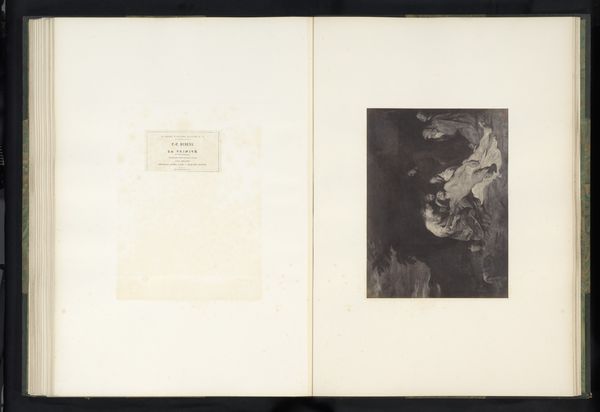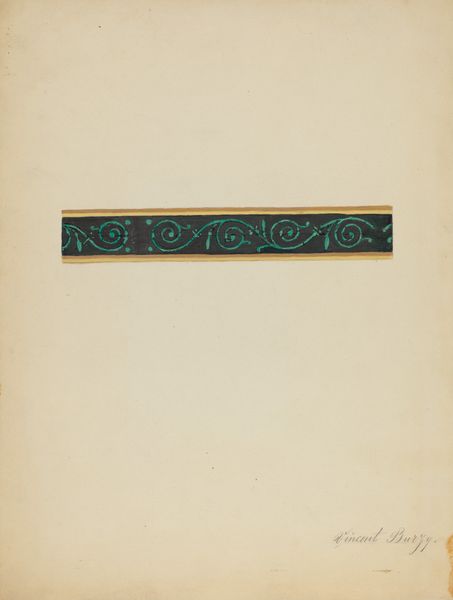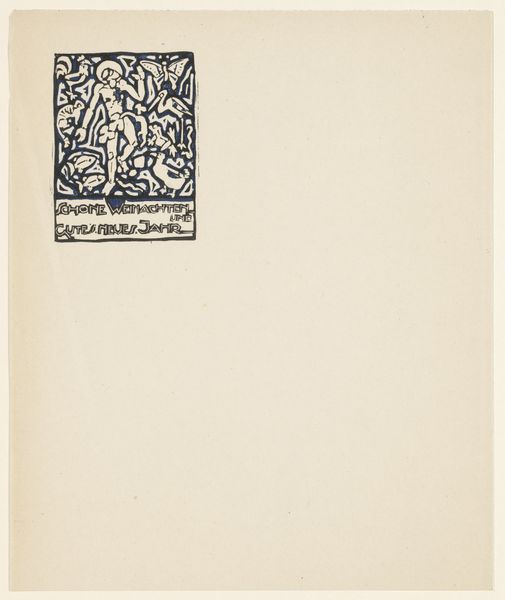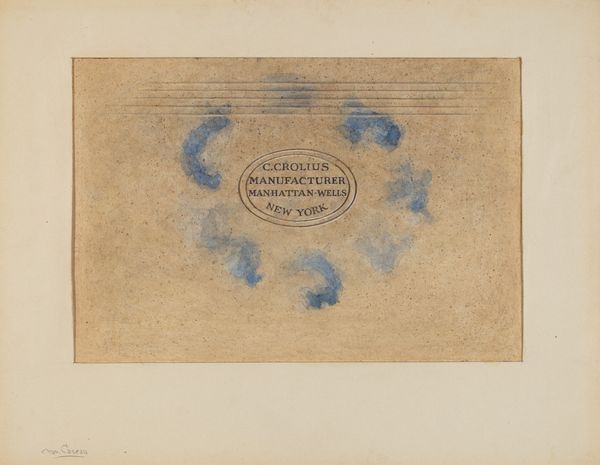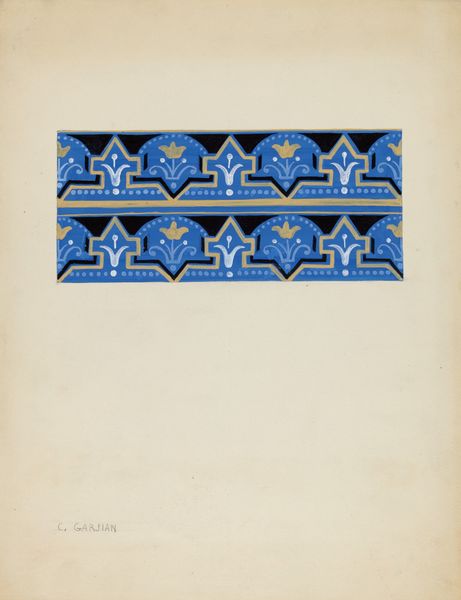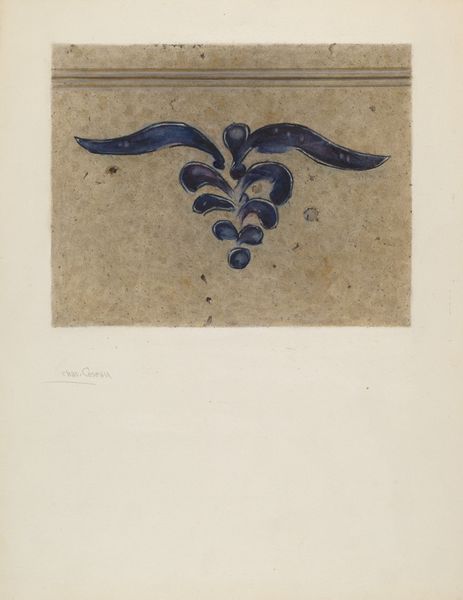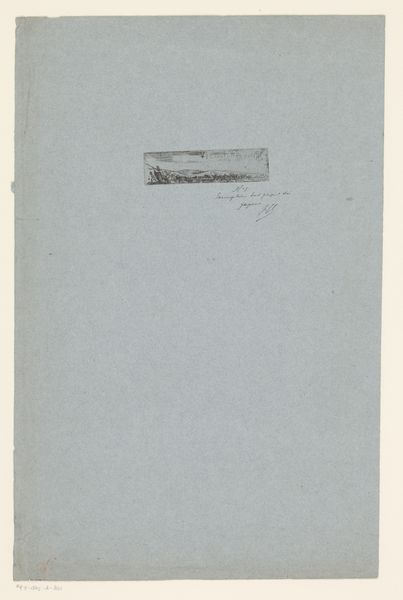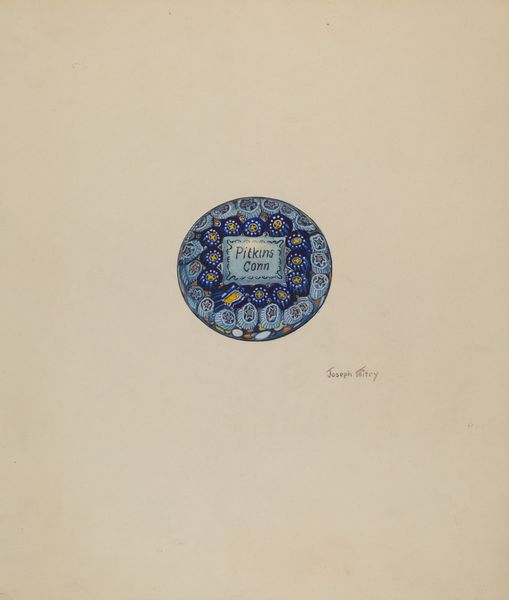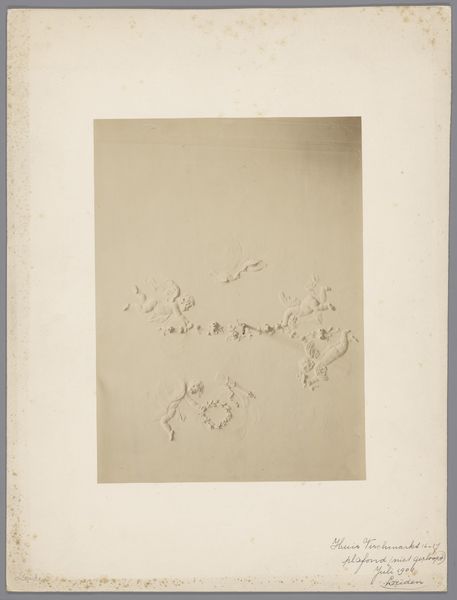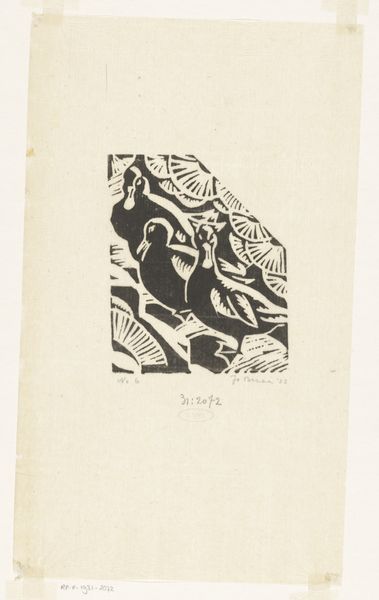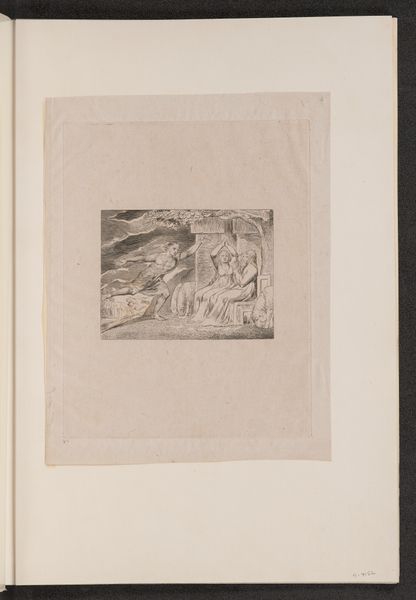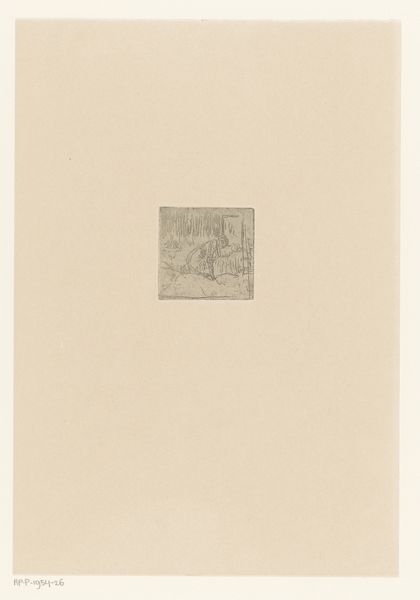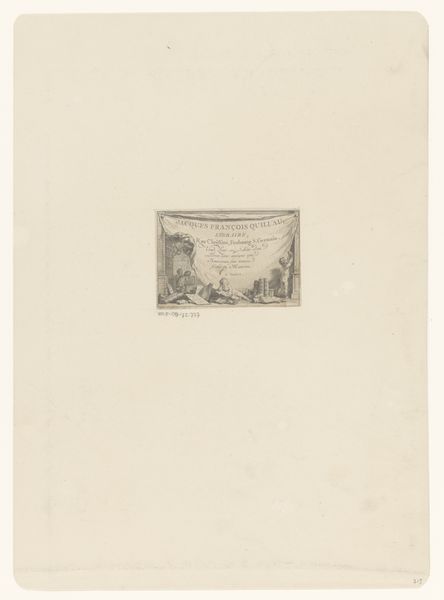
drawing, paper, watercolor
#
drawing
#
paper
#
watercolor
#
coloured pencil
#
modernism
Dimensions: overall: 28.7 x 23.1 cm (11 5/16 x 9 1/8 in.) Original IAD Object: 14 1/2" High 9 1/4" Dia(center) 7 3/4" Dia(bot) 5 3/8" Dia(top)
Copyright: National Gallery of Art: CC0 1.0
Curator: Looking at this artwork, a 1936 watercolor and drawing on paper by Charles Caseau titled “Jar”, what strikes you first? Editor: Well, it's rather intriguing. The limited color palette – mostly earth tones and blues – gives it an aged, almost antique feel. The composition is strange, an incomplete emblem of sorts centered within what appears to be some kind of old packaging or advertisement. Curator: Precisely. Caseau's drawing gives us a glimpse into the world of early 20th century commercial art, focusing on the branding for C. Crolius, a stoneware manufacturer in Manhattan Wells, New York. These drawings, created as potential branding, reflect the visual language of their time, using specific visual cues to communicate an image. Editor: Visually, the arrangement is off-kilter. The oval containing the manufacturer's name feels separate from the swirling blue forms beneath. Is it a reflection of water, given their "wells" location? The texture within the brown fields feels gritty, much like the ceramic the firm specialized in producing. There’s also a visible interplay between the controlled lettering and these organic blue patterns. Curator: That contrast you’re picking up on shows a blending of modern artistic principles with practical design. Businesses needed an image, and modernist style was entering graphic design to influence popular thought in marketing. Editor: Do you think its aesthetic success lies more in its functional purpose than as a standalone work of art? Is it art only by being shown in this gallery? Curator: In its original context, it was pure utility. Now, presented here, we reflect on how these materials offer insight into our historical sense of beauty, branding and culture. What began as merely utilitarian becomes a record of commercial and visual strategies. Editor: True. I appreciate how studying such a seemingly minor piece can unlock broader understandings about artistic values, marketing, and cultural identity across time. Curator: Exactly. It’s a tangible link to the history of consumerism, artistic movements, and marketing itself!
Comments
No comments
Be the first to comment and join the conversation on the ultimate creative platform.

